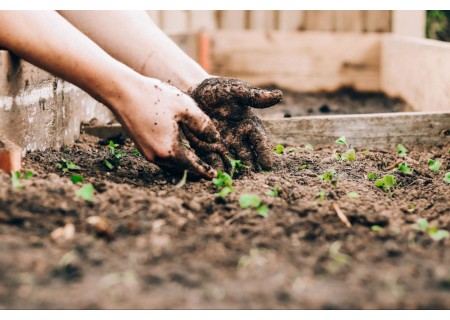7 Easy Ways to Make Organic Liquid Fertilizer

A tremendous level of natural composts are produced using kitchen squander. In any case, there are a lot more things one can change over into strong manure for use in their natural nursery as opposed to arranging them off.
instructions to make natural fluid compost
Natively constructed Manures
Natural ranchers can make their own natural fluid compost by mixing their parts of decision in water for certain days. The solvent supplements then, at that point, channel in the water arrangement.
Ranchers can decide to end the cycle and use the compost in their nurseries or even proceed assuming they expect to mature the part. A few ranchers have revealed incredible accomplishment from matured natural fluid manure.
Do-It-Yourself Natural Fluid Manure
The following are instances of natural fluid manures you can make at home:
1. Banana Strips
Banana strips accompany heaps of potassium. Manures that are wealthy in potassium are great for blossoms and natural product plants. This, in any case, may not be proper for foliage plants like spinach and lettuce.
Use banana strip natural fluid manure on squash plants and tomatoes. In a bricklayer container, put the banana strips, fill it with water, and stopper it. Permit it to sit for three days and use it on your nursery.
2. Eggshell Manure
Eggshells are wealthy in calcium and contain a little level of potassium. Smash them, put in a bricklayer container, and fill it with water. Allow it to sit for a week and utilize the water on your plants. It is great for tomatoes and houseplants. Calcium forestalls bloom end decay.
3. Vegetable Cooking Water
In the wake of bubbling vegetables, don't arrange it off. Allow it to cool then, at that point, weaken it with water. Use it on houseplants and at the natural nursery. To stay away from the terrible stench, use everything simultaneously. This water is plentiful in nutrients that the vegetables lose during the cooking system.
4. Epsom Salts
Epsom salts contain sulfur and magnesium. In a gallon of water, add a tablespoon of Epsom salts. Put the blend in a sprayer and use it on peppers, tomatoes, roses, and onions. Splash them two times each month.
5. Manure Tea
In a pail, start by setting fertilizer, trailed by water and a top. Guarantee the pail isn't firmly locked. Allow it to sit for one to two days and pour the water in an alternate can. Weaken it in a proportion of one to ten and utilize the combination in the natural nursery.
6. Weed tea
Unseeded weeds can be utilized to make manure. Add grass clippings to make it more extravagant. Grass and weeds contain nitrogen and the water speeds up its breakdown to make the supplements accessible.
Place grass and weed clippings in a 5-gallon holder and add water. Guarantee the water goes somewhat over the parts, cover and allow it to sit for three days. Channel the fluid and weaken with water in a proportion of one to ten. Use it to water plants in the natural nursery. Put the excess parts in the fertilizer.
7. Droppings Tea
Gather chicken, hare, or goat droppings, put them in a container and add water until it's somewhat over the droppings. Allow it to sit for a few days and channel the water. Weaken it with a one to twenty water proportion and use it to water plants in the natural nursery. Droppings tea is wealthy in nitrogen.
At long last
Guarantee that the plants are adequately watered prior to utilizing a natural fluid compost on them. This keeps them from engrossing abundance salts. Assuming the plants seem wilted for absence of enough water, it is prudent to water them adequately first and sit tight for 24 hours prior to applying the manure.



